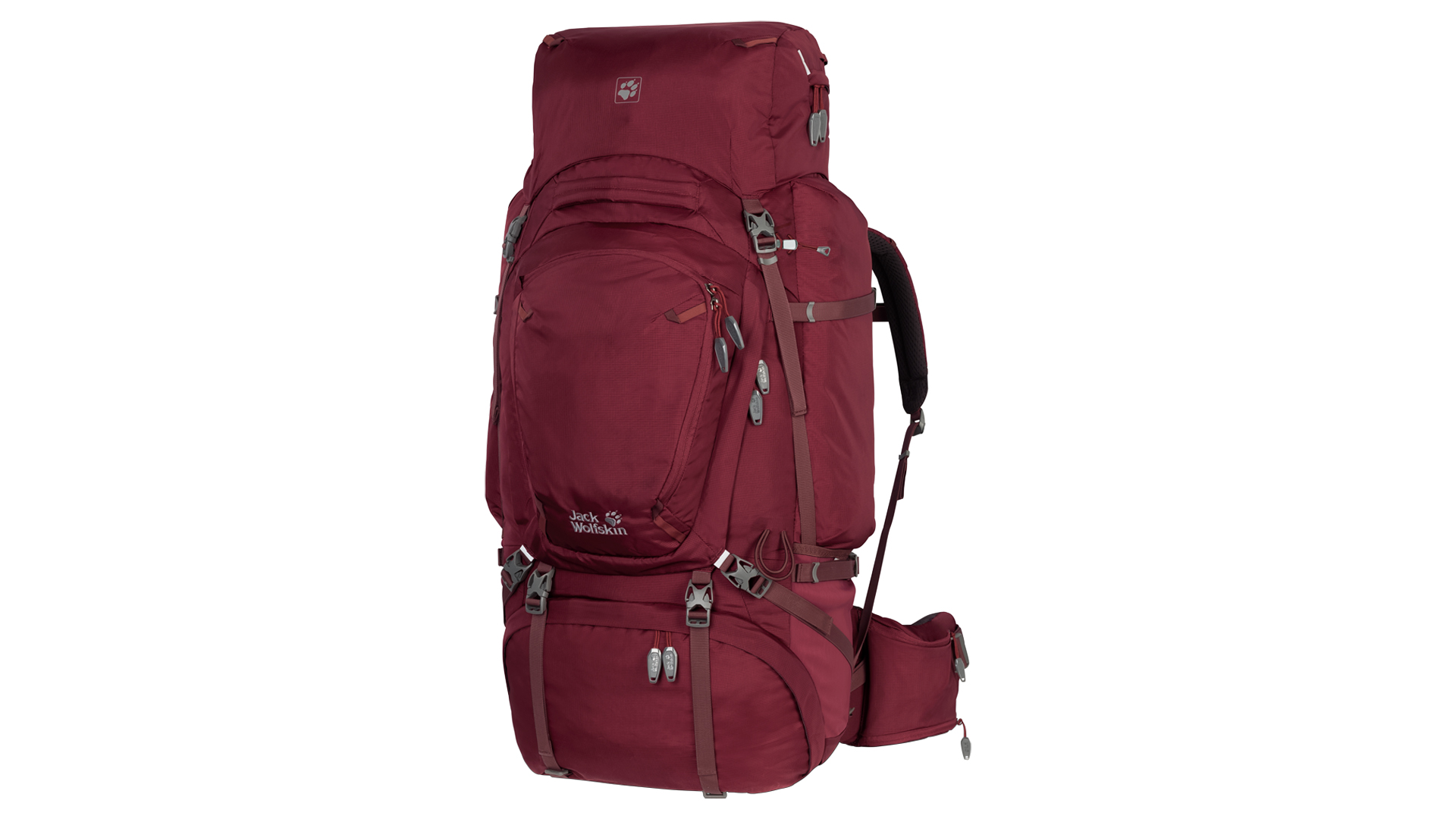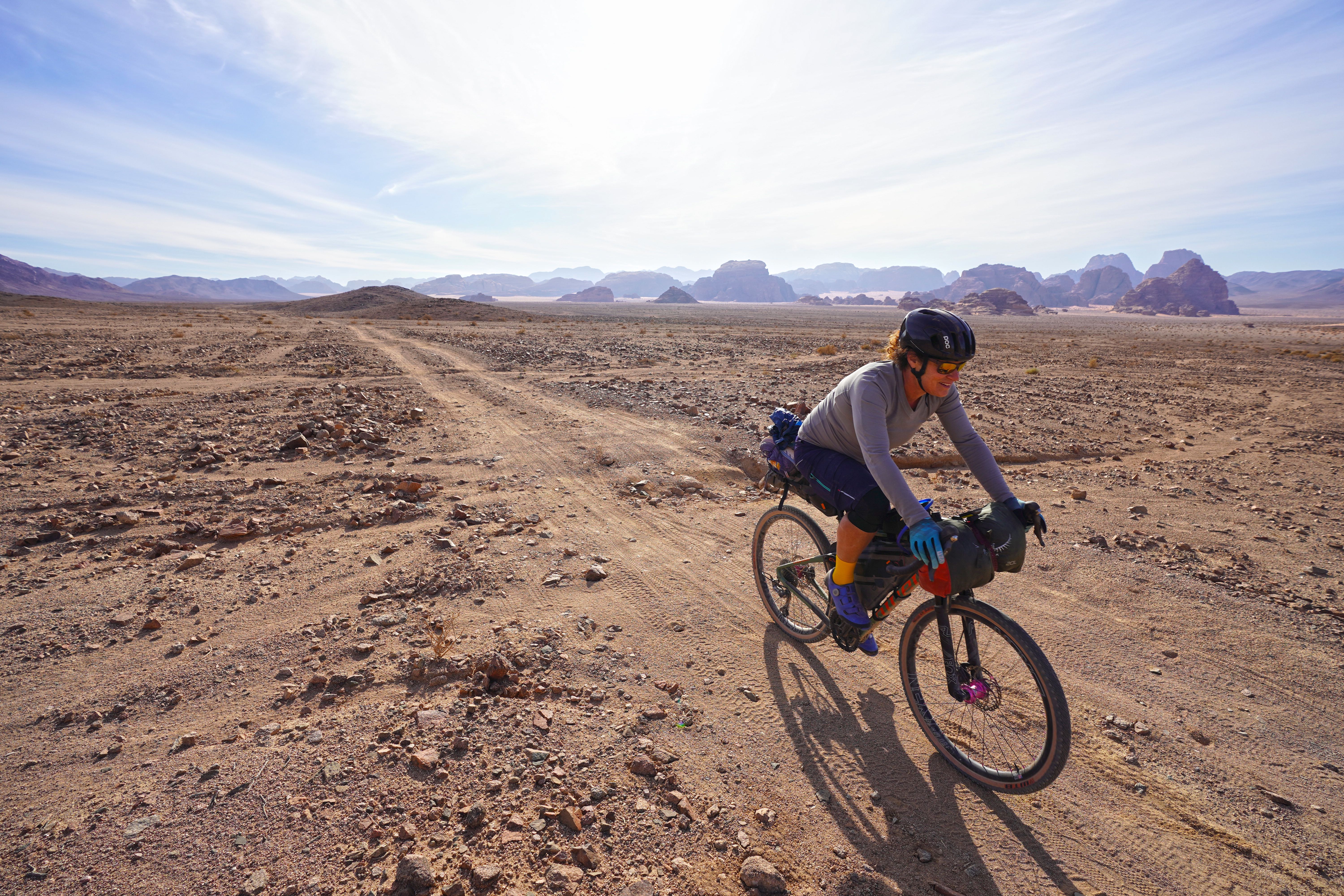Advnture Verdict
While testing and reviewing lots of packs, researching the best women’s backpacks currently available, I chose the Jack Wolfskin Denali 65 Women as the best-on-test for backpacking.
Pros
- +
There’s a pocket for everything
- +
Convertible lid comes with webbing shoulder straps
Cons
- -
Heavy
You can trust Advnture
First impressions
Developed with female mountain guides at the Alpine School Innsbruck, the Jack Wolfskin Denali 65 Women is a behemoth pack for when you’re heading out for the long haul and need to carry a lot of gear.
It features an aluminum honeycomb frame and beefy padding, including thickly padded shoulder straps and hip belt, and low back padding positioned to keep the pack away from your back.
- The best women's backpacks you can buy
- What to take thru-hiking: everything you need for an epic adventure
- 10 essential items for a backpacking adventure
A wrapping Velcro strap lets the wearer adjust the torso length, which moves the shoulder straps up and down, from Medium to Extra Large. The hip belt, which is removable if you so desire, is adjustable with a standard sliding buckle.
• RRP: $330 (US) / £183
• Weight: 2.72kg / 6lb
• Volume: 65 + 8 L / 3667 + 488 cu in
• Sizes: One harness size
• Colours: Cabernet
In the field
On the trail, the Jack Wolfskin Denali 65 Women comfortably supported loads over 50lb (22.5kg) and enabled me to keep my gear well organized on long-distance treks, when we needed to bring everything we could manage to carry.
I loved this pack’s unique main compartment access. The pack unzips like a duffel bag with a U-shaped zipper that let me peel back the front panel. I could also get to gear stored in the main compartment from the top, and via the zippered sleeping bag compartment.
The front panel is a deep zippered storage pocket with organizing sleeves inside.
I stored gear I wanted at hand in the triple-pocket lid and two spacious hip belt pockets. The lid clips off, and using the included webbing shoulder straps, I could wear it as a summit pack or for carrying essentials on short side trips.
All the latest inspiration, tips and guides to help you plan your next Advnture!
One side pocket on the main pack unzipped into a sleeve big enough to hold a liter water bottle, while tubular pockets on each side of the main compartment held a hydration reservoir and more gear.
A week into a trip, when I had eaten half my food, and the pack wasn’t as full as when I started, compression straps on the side, base and under the front flap tightened down the load, reducing pack volume and keeping the weight close to my back.
A removable rain cover that stores in the lid protected my pack when I left it behind for a dash to the summit, and when I got caught in a squall. Lash points and bungies let me expand this pack’s carry capacity, and it let me strap on my trekking poles when I didn’t need them.
Vermont-based writer, photographer and adventurer, Berne reports on hiking, biking, skiing, overlanding, travel, climbing and kayaking for category-leading publications in the U.S., Europe and beyond. In the field, she’s been asked to deliver a herd of llamas to a Bolivian mountaintop corral, had first fat-biking descents in Alaska, helped establish East Greenland’s first sport climbing and biked the length of Jordan. She’s worked to help brands clean up their materials and manufacturing, and has had guns pulled on her in at least three continents.


